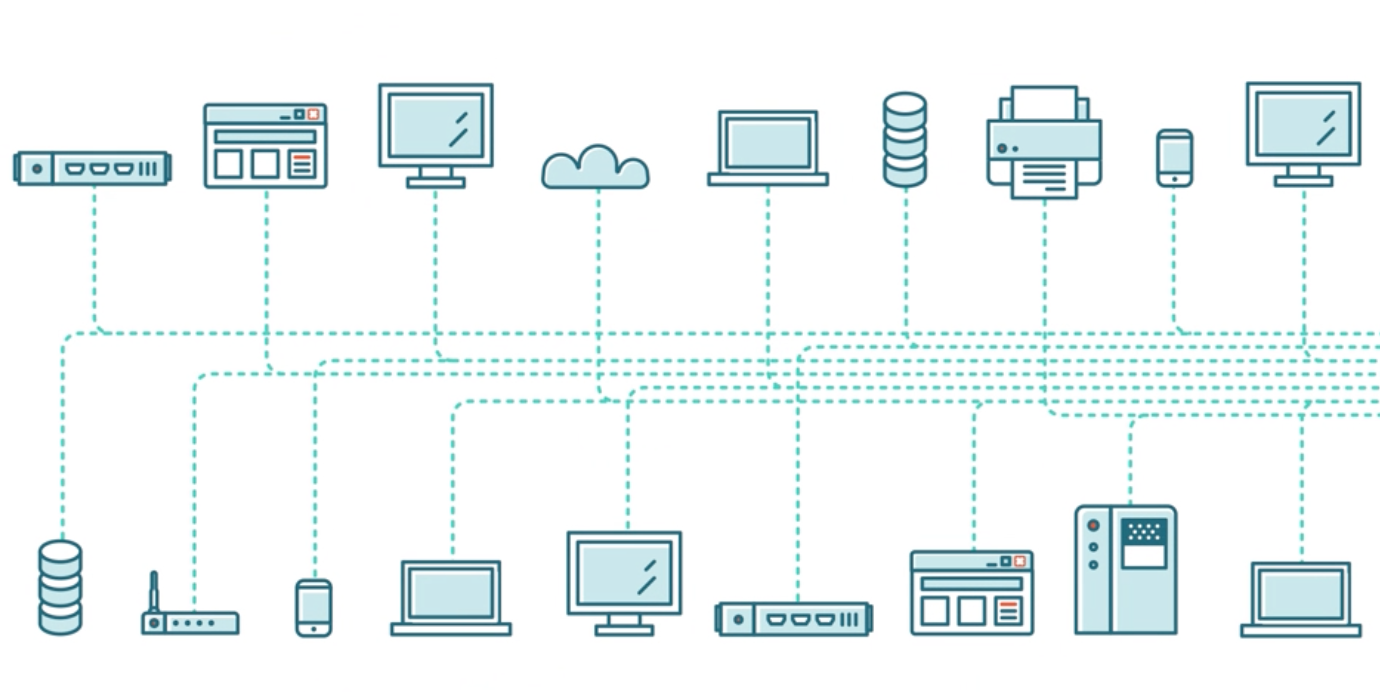What is Network Data?
Network data can help you determine the root cause of network, application, and business problems so you can troubleshoot quickly. But it goes way beyond that. Network data can also provide insights you can use to optimize your IT operations and make your entire business more efficient. Here you'll learn how network data is created, how can be structured into valuable source of insights, and why it is a more comprehensive source of useful information than system logs or agent data.
Definition: Network data is all the communications transacted on the wire between servers, applications, databases, storage arrays, and devices on your network. Anything that connects to your network contributes to the stream of network data.

Data Sets
As we covered, network data is all communication between devices, applications, clients, and infrastructure elements on a network.
Network data is all of the 1's and 0's passed between devices on a network. A device is anything that accepts input or outputs data. Examples of devices that likely are passing network data in your environment right now:
- Laptops & desktops
- Printers & other network connected peripherals
- Web servers (and any other server type)
- Databases
- Storage arrays
- Cell phones & other mobile devices with network connectivity
- Applications & cloud services
These systems can produce large and complex data sets that can be hard to analyze with point solutions. But with ExtraHop's wire data analytics platform, you can take even the most complex mishmash of network data and isolate issues or pinpoint optimization opportunities.
Use Cases
Since all business and technology transacts using network data, companies in any industry can get actionable insight by implementing network data analysis. Here are some examples of how companies have used ExtraHop to do just that.
These use cases are just a few of the many ways that network data analysis can improve a business's ability to manage resources, plan for growth and capacity changes, and maximize their efficiency to save time and money on network infrastructure and management overhead.
 Cross-Tier Network Performance Monitoring for Finance
Cross-Tier Network Performance Monitoring for Finance
In one case, a multi-billion dollar financial services company wanted to reduce computer resource usage by monitoring their system. The challenge was to do so without violating SEC and PCI regulations. They were able to achieve this using ExtraHop's real time network data analysis in combination with:
- SSL decryption, a native feature of ExtraHop that works at line speed, allowing for real time analysis of network data.
- Precision packet capture, an ExtraHop feature that allowed them to capture only the packets related to specific issues.
- Alerts and dashboards, for visualizing and alerting on anomalies.
Learn more about network data analysis for financial institutions.
 BYOD & Mobile Network Monitoring
BYOD & Mobile Network Monitoring
An IT team wanted to reduce network congestion and risk of data loss due to employees connecting their personal devices to the network and to internal services, while still allowing for appropriate usage of network resources on these devices. They reduced their global VPN saturation from 90% to 60% at peak times by using network data analysis from ExtraHop. Their tactics were:
- Device autodiscovery, an ExtraHop feature that automatically detects and tracks every device that is connected to their network, so that when new BYOD users came online, they are accounted for.
- Activity mapping: using ExtraHop's network data analysis to correlate resource usage with device type so they could allow access to essential services while conserving bandwidth by cutting off mobile access to non-critical resources.
- Ongoing non-invasive monitoring of connected mobile devices, so they could manage the availability of resources to these users based on actual need.
Learn more about the importance of mobile networking monitoring.
Analysis
You know what network data is. And what kinds of information it contains. But how do you analyze all of this data?
With a streaming network data analytics platform!
Simply put: you need to have a solution in place that can ingest, in real time, all the packets flowing chaotically through your IT infrastructure, and structure that network data into wire data that can be observed, analyzed, and correlated throughout the entire system.. Without this structure, you just have data. And data - with no way to gain insights into its meaning - doesn't do anyone any good.
The ways that network data can be analyzed to provide business insights and enhance IT operations include:
- Understand how users experience your websites and applications by analyzing network data to correlate each user's browser with their page load times and other usage data
- Proactively alert on suspicious data movement, both north-south and east-west, to reduce your vulnerability to cyberattacks and data breaches.
- Identify inefficient database queries and other frequent processes to find opportunities for optimization to save compute cycles and money.
- Get a simple, centralized UI to investigate anomalies in your data on-premises, in the cloud, at branch offices, and in hybrid environments.
Driving Business Value with Continuous Operational Intelligence
In this white paper, EMA Vice President of Research Jim Frey explains how IT organizations can derive real-time IT and business insights from their wire data, as well as the unique capabilities included in the fourth-generation ExtraHop platform that make this continuous operational intelligence possible.
Structure and Visualization
Wire data is the way. By transforming unstructured packets of data as they stream through the network into structured, searchable, and visualized wire data. Transforming unstructured network data into structured wire data is the first step to getting real-time value out of this frequently untapped data resource.

Resources Around Network Data
To learn more about network data, we invite readers to read through and share the following resources: